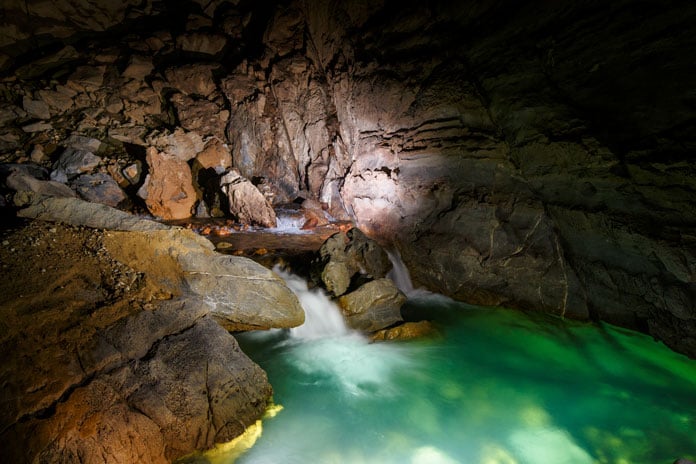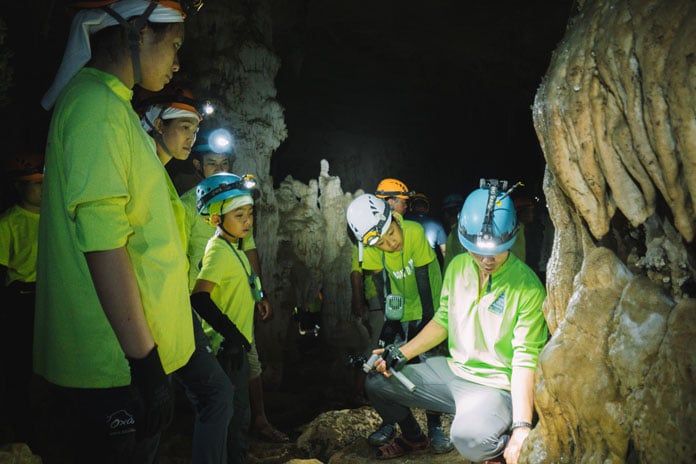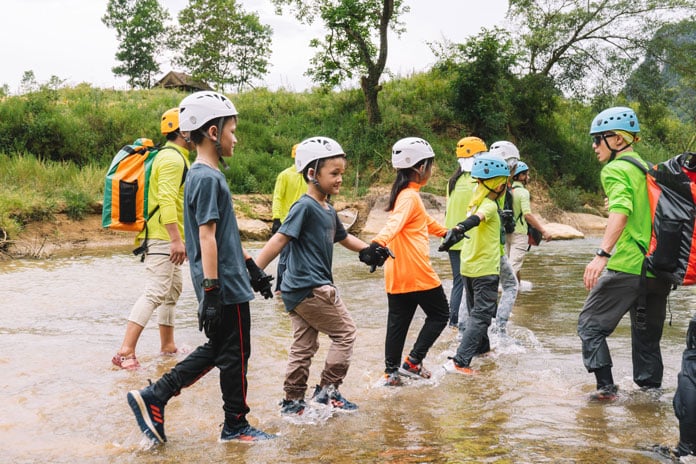Emergency Action Plan in the event of lightning and thunderstorm on Oxalis tours
Date of Issue: April 01, 2020
I. Introduction
1. Overview lightning
Customers may unexpectedly interact with natural phenomena such as thunder and lightning whilst on tour. Therefore we should have a plan to deal with such occurrences.
2. Where does lightning strike the most?
Lightning tends to hit high points, the surrounding terrain, and exposed places such as fields, golf courses or parking lots. It is especially dangerous when standing under ridges or significantly higher ground since these are places where positive ions accumulate the most (positive charges) and negative ions (negative charges) forming at the bottom of the cloud will strike down. 90% of lightning strikes come from negative charges.
The risk of lightning strikes will be higher if you are holding iron objects such as umbrellas, hoes, sickles, etc. or standing by metal objects like cars, bicycles, motorcycles, iron fences. Standing near booths, electrical substations, or overhead power lines have a high risk of lightning strikes. In 2016, Vietnam had 81 lightning cases that damaged the 110 kV low voltage lines.
Under rivers, streams, or swimming pools; bathing during a thunderstorm; watching TV, using a landline, or charging a cell phone fall into the second risk category. Standing close to windows, doors or lying on the floor (grounded) carry a lower risk.
- First, cloud-to-ground (CG) lightning (called direct strike because of the shortest path) is the most dangerous lightning because of the death rate of up to 80%.
- Second, horizontal lightning: The lightning strikes an object, then the electrical current passes through the air and moves to people nearby.
- Third, contact strike: a person is touching an object (such as a tree or pole) that has been struck by lightning.
- Fourth, ground strike: Lightning strikes the ground and the current spreads out in a circle from that spot.
- Fifth, lightning is transmitted by telephone cables, sockets, etc.
- Statistics in the US show that 27% of people were struck by lightning in open places, 19% were near trees, 8% were swimming or in the area near water, 3% standing next to machines, 2.3% used a hardwired phone, 0.7% related to radio, television, antenna, etc. In addition, 40% of people were struck by lightning with unidentified sources.
- Currently, science only identifies 11 types of lightning and the nature of ball lightning is still questioned.
- Most lightning arises when warm, moist air moves upward in an updraft but some do not require this element. For example, a fire cloud is a dense cumuliform cloud associated with forest fire or volcanic eruptions that may produce dry lightning, especially positive lightning strikes down when the sky is clear or a bit cloudy.
II. Situation of rainstorm and thunderstorm & lightning in Vietnam
Vietnam is situated in the center of the Asian thunderstorm region
A thunderstorm is a rainstorm where heavy rainfall, lightning, and thunder take place. Lightning is an electrical discharge caused by imbalances between storm clouds and the ground, or within the clouds themselves. Lightning can strike anywhere, any objects or items when the charge at the bottom gets strong enough.
Moreover, when letting out energy, lightning can move at a speed of 36,000 km/h and its range of effect is within 8 km with temperatures up to 27,700 degrees Celsius (5 times hotter than the sun) causing death, injured or damaged property, etc.
Lightning strikes more than 250,000 people each year worldwide and about 24,000 people are killed. Survivors can experience devastating long-term effects.
Lightning can strike where it's not raining, or even before rain reaches the ground and it occurs most often in the afternoon and evening of the summer months. According to research from the Institute of Geophysics, Vietnam is situated in the center of the Asian thunderstorm region-one of three thunderstorm centers in the world with strong thunderstorm activity. The thunderstorm season in Vietnam is often quite long, on average, this country receives rainstorms nearly 100 days per year and the number of hours of thunderstorm is 250 hours a year.
Each year, Vietnam gets up to two million lightning strikes. The recurrence of lightning in the hilly, northern midland and southern delta is more noteworthy than in other areas. In mountainous areas, although lightning occurs more, it is less dangerous because there are many large trees - which are good conductors. There are few trees in the midlands and plains so people and livestock are more likely to be struck by lightning.
III. Situation of tour organization
1. The tour is operating
Oxalis Company organizes trekking, climbing, caving tours in Phong Nha - Ke Bang area and Tu Lan Cave System in Tan Hoa, Minh Hoa district, Quang Binh Province.
The tours are scheduled according to the season and the expected weather.
- Son Doong Tour is operated from the end of January to the end of August every year
- Hang En Tour is operated from mid-December to mid-September every year
- Hang Va and Nuoc Nut Tours run from mid-January to the end of August every year
- Tu Lan Tours 1, 2, 3 days and Hang Tien 1, 2, 3 days tours are operated from mid-November to mid-September every year.
- Tu Lan Tour 4 days depart from January to the end of August every year.
Depending on the weather each year, these tours may be closed at any time. In the case of excessive rainfall, Oxalis will consider canceling the tour or switching to a safer alternative.
2. Campsites outside the cave
Currently, two tours have campsites inside the cave namely Hang En and Son Doong, the rest of the tours include campsites outside, by the stream or under the trees. The details are as follows:
1. To Mo campsites
- Large central campsite
- Small campsite at Hung Ton waterfall
- Small campsite inside To Mo cave
2. Tu Lan campsites
- Large Central campsite
- Auxiliary campsite
3. Hung Dung campsite
4. Hang Tien campsites
- Campsite next to the resurgence pool
- Campsite on the banks of the river
5. Hang Va campsite
IV. Prevention measures
In Quang Binh, the thunderstorm season happens after a hot period (summer). Under these weather conditions, lightning phenomena became more frequent. Therefore, to ensure the safety of customers and employees, we need to take the following lightning safety steps:
1. Avoiding lightning strikes on tour
There is no place that is completely safe during a thunderstorm. Houses, cars, trees, animals, and everyone are struck by lightning. The purpose of this measure is to minimize the risk and damage from the effects of lightning strikes. Find a house or rock arch when you hear thunder. Picnic shelter and other open structures don't protect you from lightning.
When you enter the forest, follow all safety instructions given below:
- DO NOT seek protection under an isolated tree and a picnic shelter, or metal object because they will attract lightning. You may get wet, but it is safer than holding on something that could be dangerous.
- Come down from high places. Seek a valley or depression in the terrain. Be careful of entering a dry valley that may channel a flash flood from the rainstorm.
- Look for low shelters such as lom com cliff, doc cay xoai cliff, or under the low trees. This will help keep you dry and not attract lightning.
- In case you're at the entrance of Hang Kim Cave or any cave when you hear a thunderstorm, temporarily stay inside the cave and hold off until the storm passes.
- DO NOT stand close to conductive objects such as aluminum boats, iron stakes, and devices that can attract lightning.
- DO NOT swim while there is thunder and lightning.
- If you are on a mountain top, try to seek shelter in a low area that you can reach, preferably with large boulders around so you can get some protection from driving rain behind some smaller boulders.
- Your group should not huddle together. Instead, have each person find shelter about 30m apart. This minimizes the possibility of multiple casualties from a single strike.
- Put on a raincoat and take off the backpack. If your backpack has a metal frame construction, keep it at least 30 meters away. If you hold metal hiking sticks, put them in the same position as your backpack.
- If you are not able to get to any shelter:
a) Crouch down low like a baseball catcher. Get as low as you can. The nearer you are to the ground, the less likely you are to be struck by lightning. But never lie down!
b) Don’t touch any possible conductors.
c) Touch the heels of your feet together. If electricity from a ground strike enters your feet, this increases the chances of the electricity going in one foot and out the other, rather than into the rest of your body.
d) Place hands over ears to minimize hearing loss from the loud clap of thunder that will boom very close to you.
e) If your hair begins to stand on end or your skin starts to tingle, a lightning strike is imminent. Immediately get into the crouching position. Lighting may strike without this warning, however.
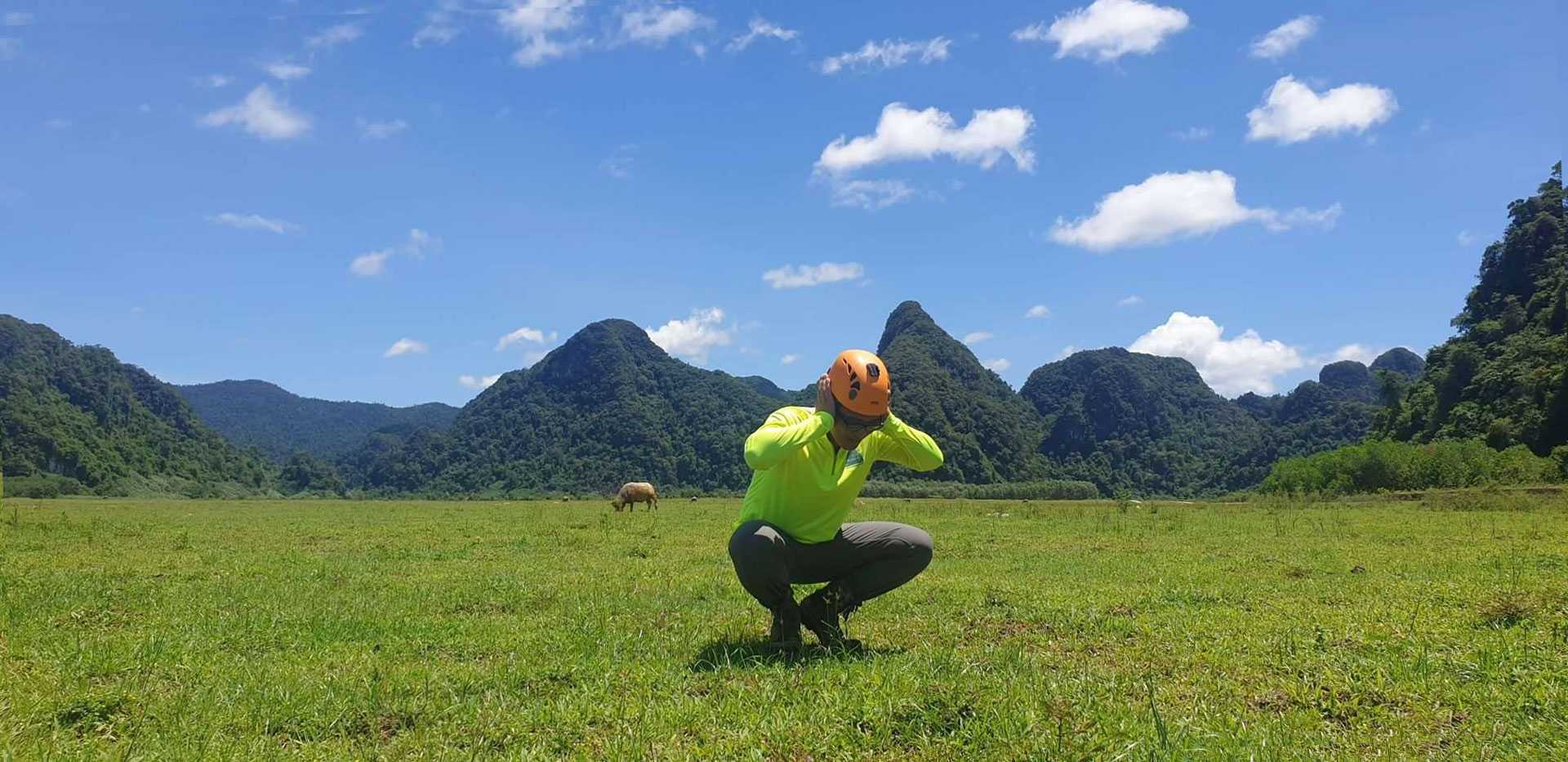
Photo: The crouching position
2. Lightning protection at fixed campsites
- Oxalis will work with consultants to install surge protection devices and fix lightning rods at campsites.
- Make sure tents or shelters stay dry, and equipped with electrical insulation.
- Make sure the campsite is in a low -lying area to avoid large trees.
- Minimize metal equipment around campsites and DO NOT wear metal on your body during thunderstorms.
- In campsites, safe hiding places need to be prepared such as in large rocks with safety cliffs and these places must be equipped with insulated carpets.
- Turn off electronic devices such as phones, laptops, and cameras when there is a thunderstorm.
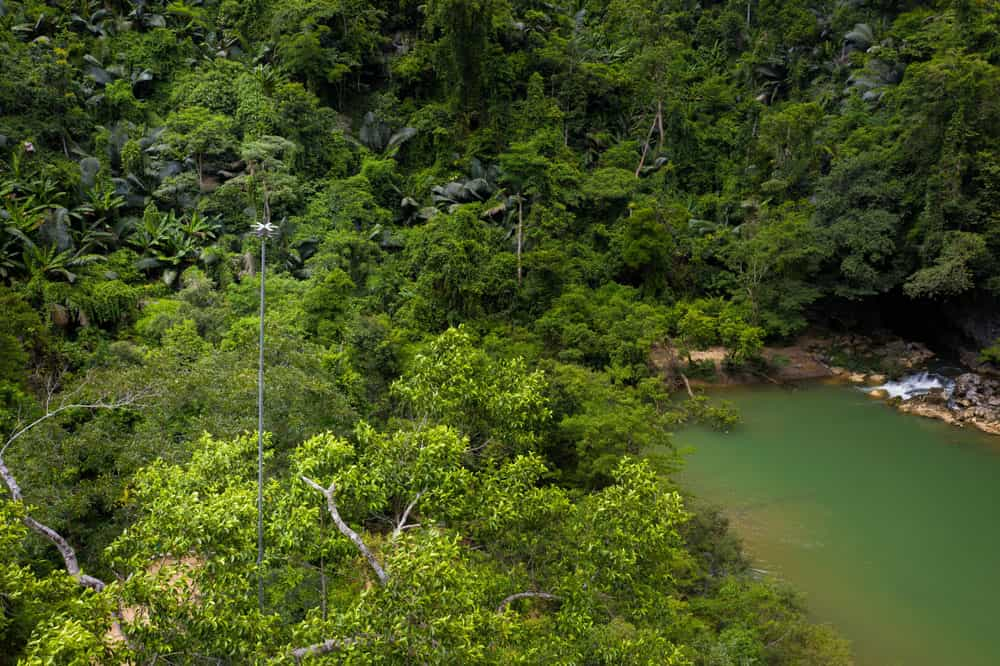
A lightning rod is installed near our camp
V. First Aid for Lightning Victims
When someone has been struck by lightning, if a person enters a coma, determine whether he is still breathing or not. If the heart has stopped beating, a trained person should give cardio-pulmonary resuscitation (CPR).
- Laying the person flat on his back.
- Giving mouth-to-mouth resuscitation: Use one hand to hold their chin and lift it up, then keep their mouth open using your thumb. Place your other hand on their forehead and pinch their nose with your index finger (pointer finger) and thumb. Take a normal breath, cover and seal their open mouth with yours, and blow into their mouth for about one second (2 rescue breaths.).
- Place the heel of your hand on the center of the person's chest, then place the other hand on top and press down by 3 to 5cm at a steady rate of 100 to 120 compressions a minute.
- Continue with cycles of 30 chest compressions and 2 rescue breaths until they begin to recover or emergency help arrives.
- Must fix the spine neck and back of victims in suspected cases of swelling of the head or neck with hematoma.
- After giving first aid, it is necessary to quickly bring the victim to the nearest medical facility.
VI. Implementation
This lightning prevention measure is disseminated to all guides, safety assistants, porters, operating staff, sales and marketing staff. The operating department is responsible for training and practicing required actions when thunderstorms and lightning occur. The project department is responsible to coordinate with the operations department to hire a consultant to provide lightning protection measures in campsites. This plan and process will officially begin on the date of signing.
General Director
NGUYỄN CHÂU Á
Whether you prefer long treks, camping in a cave, sleeping under the stars in the jungle, swimming underground in river caves, explore the huge dry caves or just taking an exploratory day trip, Oxalis Adventure Tours can provide the right amount of adventure just for you.



__637051765075307793.jpg)
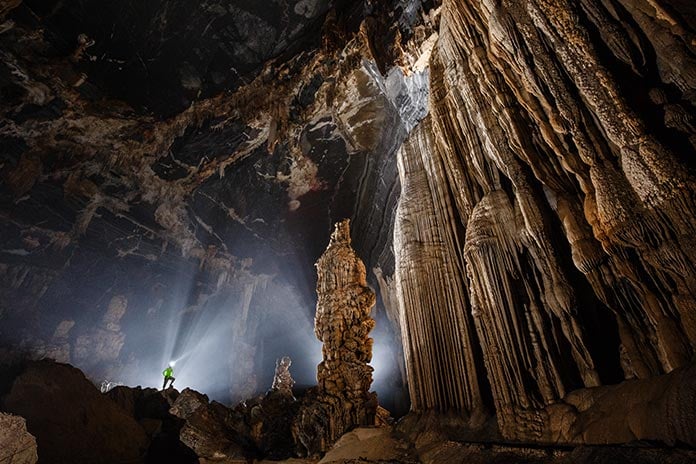
__637051782550081035.jpg)
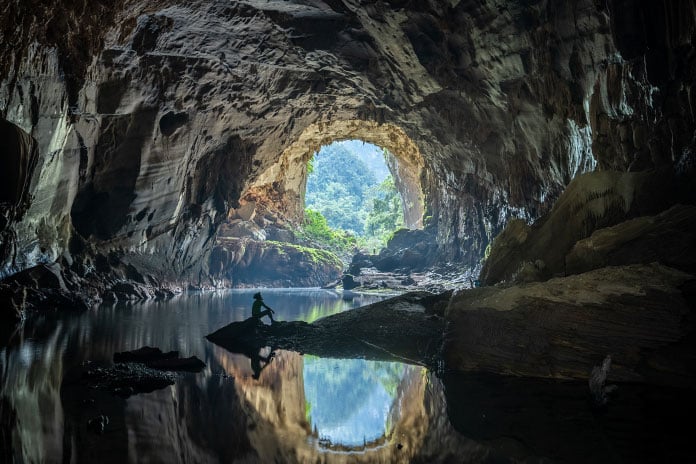
__637051777074859032.jpg)
__637051780703588520.jpg)
__637051781488596056.jpg)
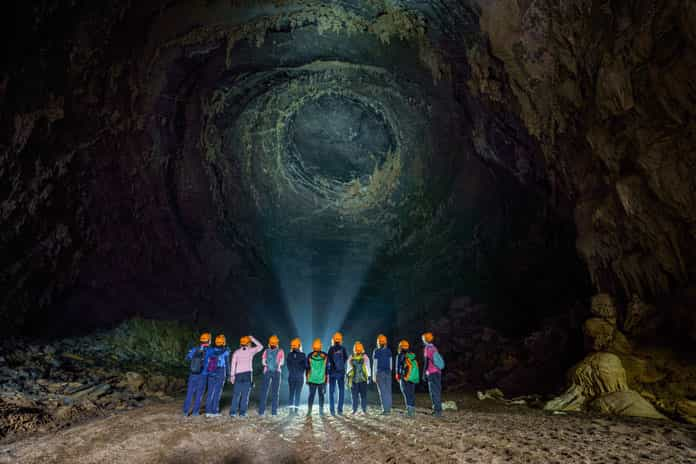
__637051767008903435.jpg)
__637051774329206026.jpg)
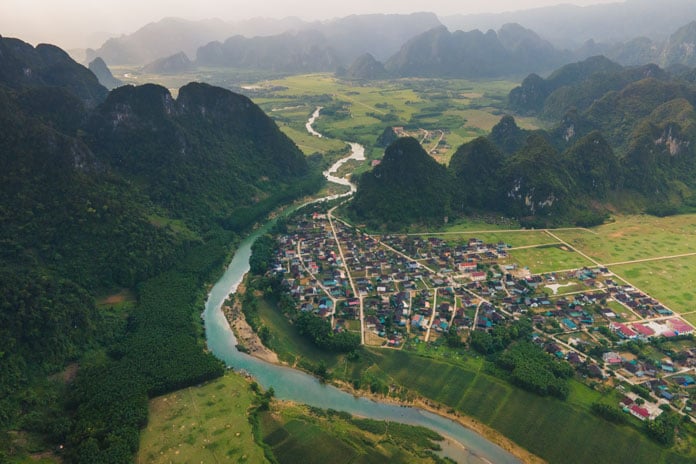
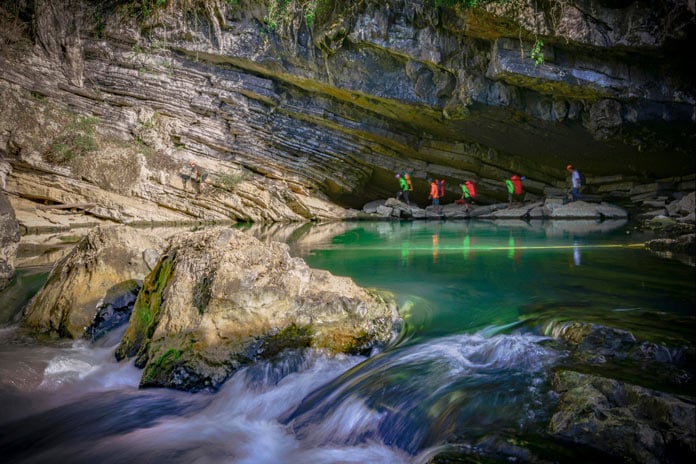
__637740499994967442.jpg)
